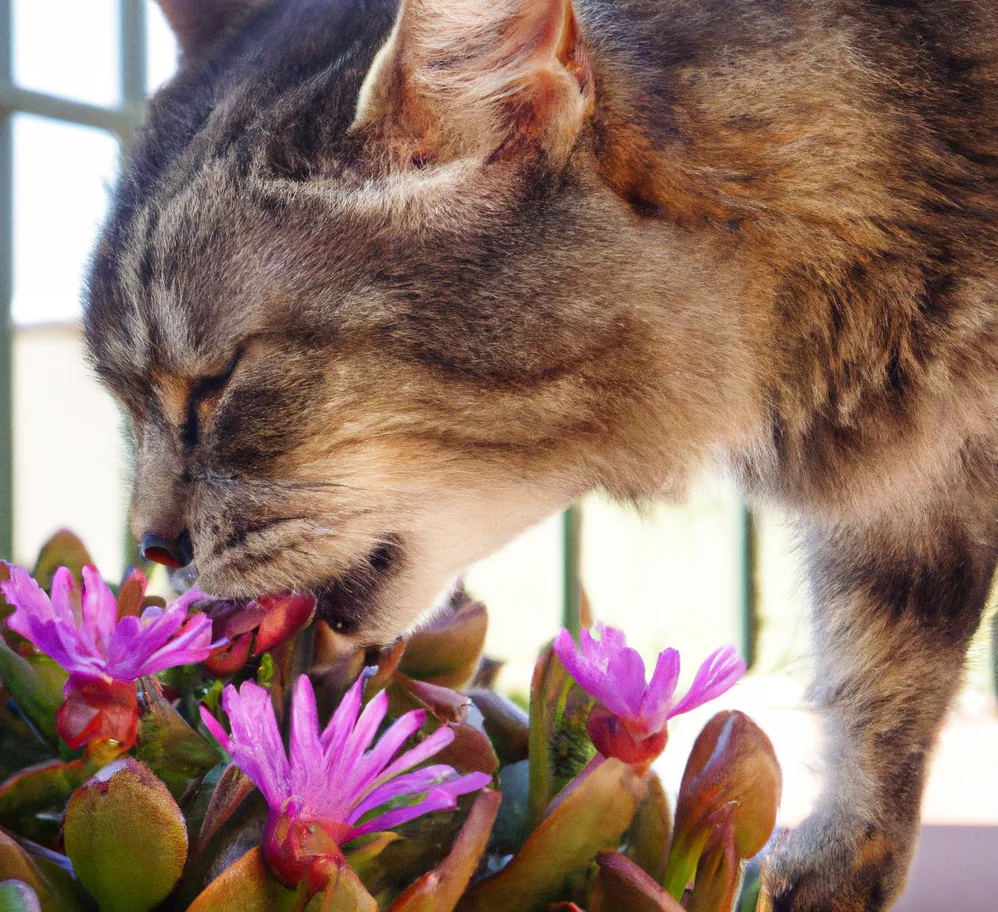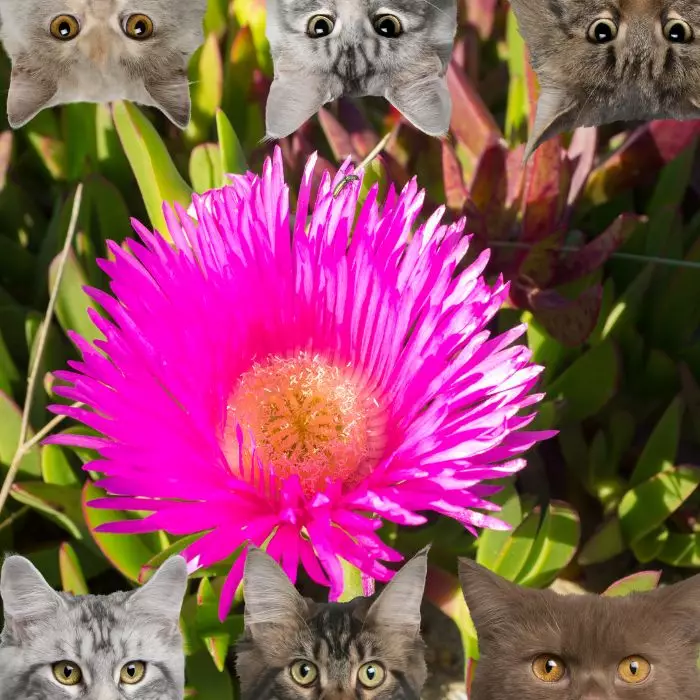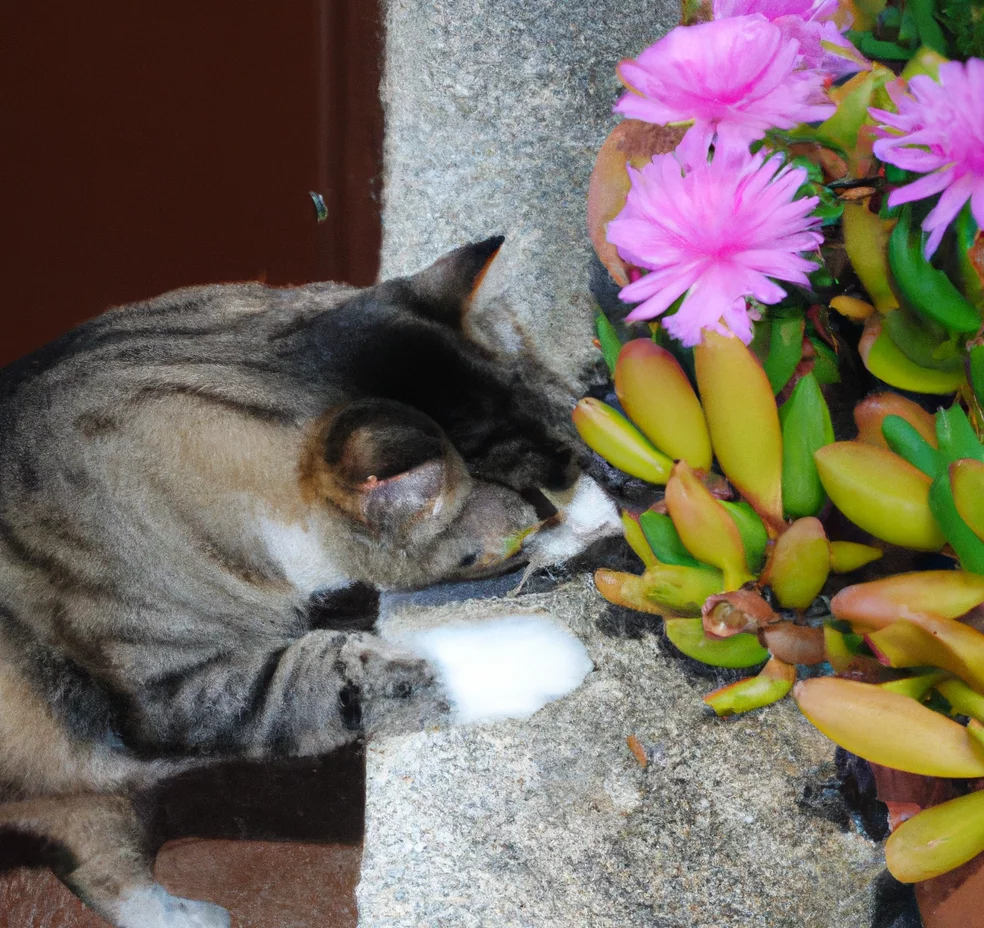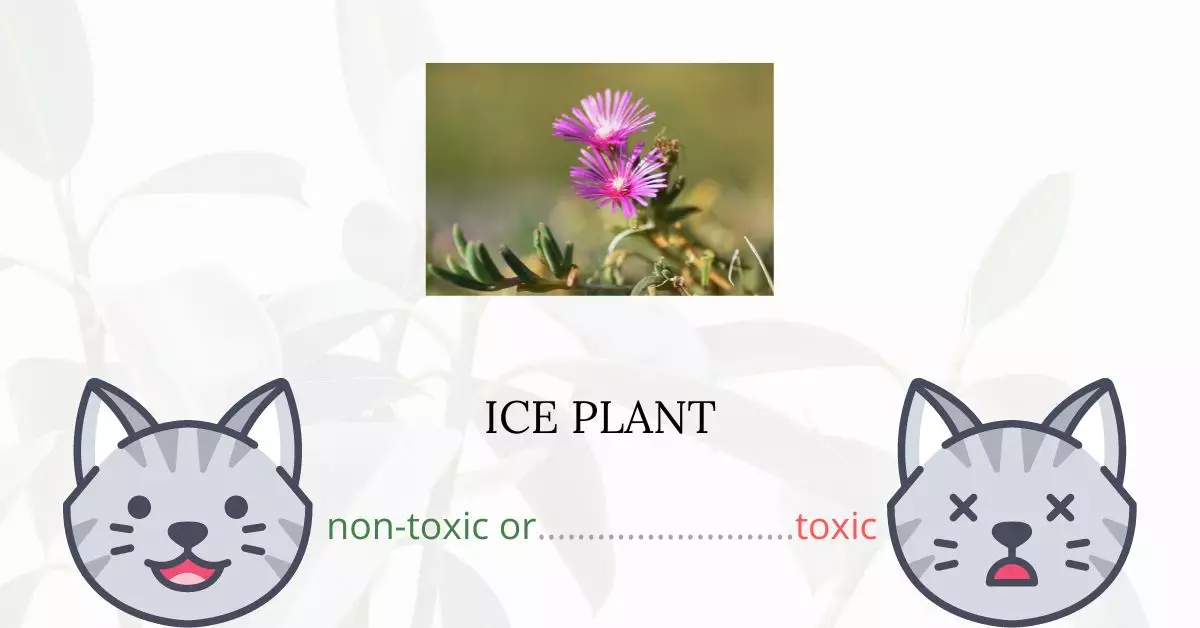Ice plants are not toxic to cats, allowing you to beautify your landscapes and homes with these plants without posing a threat to your feline companions.
This article has been crafted in collaboration with a team of experienced DVMs (doctors of veterinary medicine). Their invaluable insights and expertise enable us to present accurate and up-to-date information about the potential risks of various plants, specifically the Ice Plant in this context. Furthermore, to ensure a comprehensive assessment, we have consulted high-authority websites such as ASPCA and PetMD for every plant mentioned.
Can Cats Eat Ice Plant?

Although these plants are not harmful to cats, you shouldn’t let your feline eat them. You might ask what could possibly occur if your cat consumed some ice plants.
The worst-case scenario, if she ate too many ice plants, would be some digestive problems that would cause vomiting and diarrhea. If she only consumes one leaf, she ought to be fine, but keep an eye out for any allergic reactions.
What is an Ice Plant?

Originally from southern Africa, the ice plant (Lampranthus) is a genus of succulent plants in the family Aizoaceae. The species of this genus often have long, smooth, elongated, succulent leaves. The species of this genus frequently have very big, colorful flowers that typically occur in summer and frequently cover the plants totally. These emerge in opposite pairs on the branches of the bushes and can be triangular or cylindric like all other members of their family.
The reason the ice plant is called an ice plant—rather than because it can withstand freezing temperatures—is because its blossoms and foliage appear to be sparkling with frost or ice crystals. The plants eventually reach heights of 3 to 6 inches (7.5 to 15 cm) and widths of 2 to 4 feet (0.5 to 1 m). Although they may tolerate a little mild shade in the garden, ice plants prefer full sun.
Keeping Cats Away From Ice Plant

The simplest method is to use a garden netting system with plastic fencing or a row cover system. You can purchase a raised garden box kit with row coverings in a flower garden, or you can build your own from PVC or plastic tubing to mimic a hoop grow tunnel.
The alternative is to construct a garden bed with detachable chicken wire fencing over a timber frame. Pinecones are another option; cats dislike the sharp sensation they get when they scratch the ground. Pinecones can be used as mulch and to deter cats at the same time. It is more cost-effective and preferable to using plastic forks.
Plants to Avoid For Your Cats
If you are a cat owner and unsure if the plants growing in your yard are harmful to your cats, check out this list of toxic plants for cats. You can also check our list of non-toxic plants for cats.





